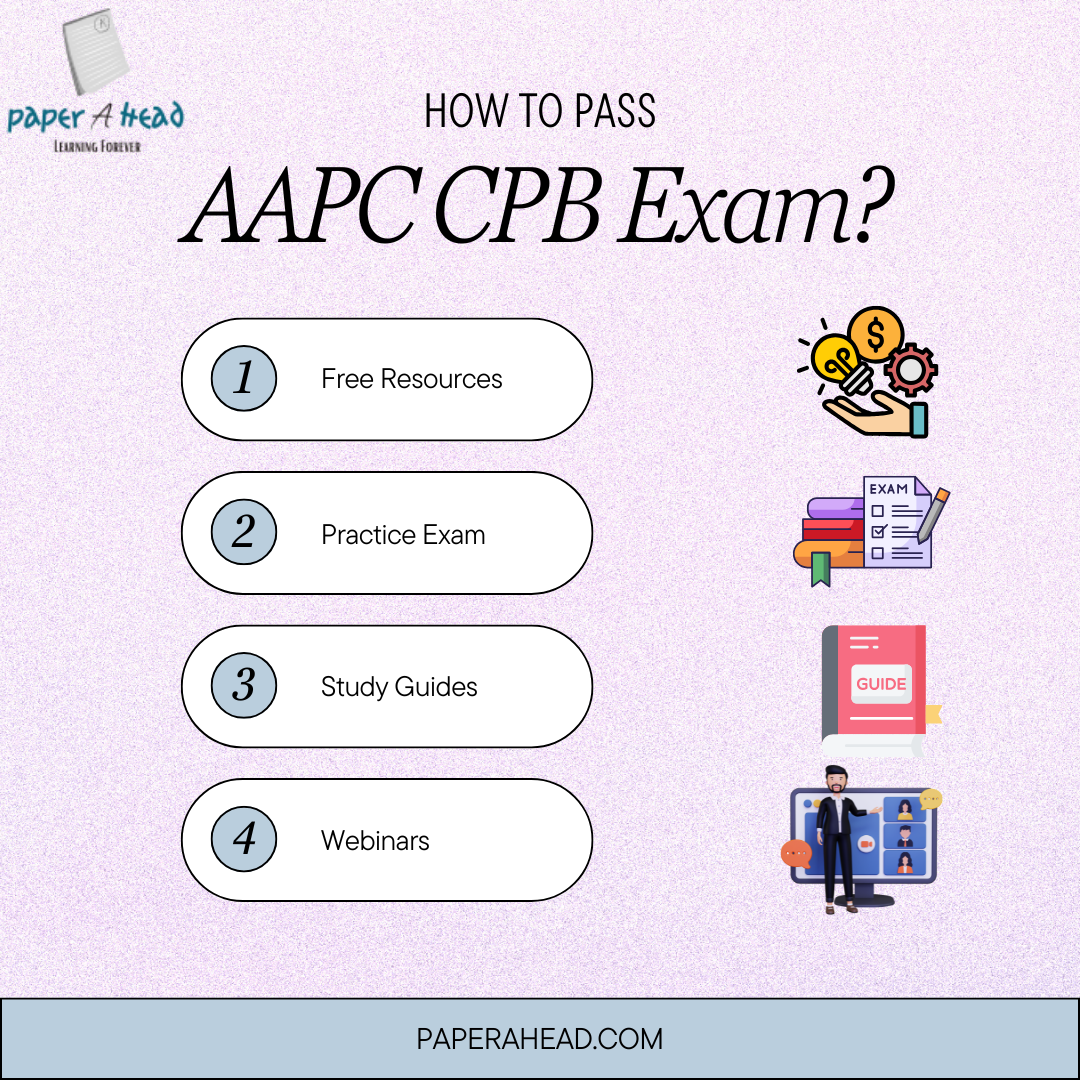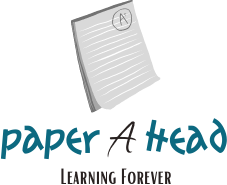There are many ways to clear AAPC CPB (Certified Professional Biller) exam and get certified. The exam is designed to test your knowledge and skills in medical coding, billing, and compliance. It covers various topics such as healthcare regulations, insurance policies, reimbursement methods, and medical terminology.
How To Pass AAPC CPB Exam?
The AAPC offer training and study materials for the CPB exam, but you have to pay for them. The training including virtual instructors, study guides, and practice exams. They also provide a recommended reading list for additional study materials that you can purchase.\

Free Resources:
Many educational platforms offer free resources for the AAPC CPB exam. These resources include practice exams, study guides, and webinars.
Practice Exam:
The exam contains 135 questions and Paperahead fulfil the criteria of practice exams. It provides an online exam that simulates the actual CPB exam, allowing you to measure your preparedness and identify areas for improvement. The exam is free and can be taken multiple times.
Approved Code Books:
Code books are an essential tool for the AAPC CPB exam. These books include the ICD-10-CM, AMA’s CPT® Professional Edition, and HCPCS Level II codes. By using the approved code books, you will have access to the most current and accurate information for coding and billing procedures. It is highly recommended that you become familiar with these code books before taking the exam.
Keep Learning:
Coding and billing guidelines are constantly changing, so it is important to continue learning even after passing the exam. There are various resources available such as online courses, webinars, and workshops that can help you stay updated on any coding changes or updates. Additionally, joining professional organizations like the AAPC can provide access to valuable networking opportunities and resources for ongoing education.
Practice Makes Perfect:
One of the best ways to prepare for the AAPC CPB exam is by practicing coding scenarios and exercises. This will help you become familiar with different types of cases and improve your speed and accuracy in code selection. Many online resources offer practice exams that simulate the actual exam experience. It’s also beneficial to work through practice questions and cases with other coding professionals to learn from their perspectives and approaches.
Stay Updated:
Medical coding is an ever-evolving field, with constant updates and changes to coding guidelines. It’s crucial to stay updated on these changes by regularly reading industry publications, attending conferences, and participating in training programs offered by organizations like the AAPC. By staying current with coding updates, you’ll ensure that your skills are up-to-date and increase your chances of passing the exam.
Recap:
Medical coding is more than just a career; it’s a gateway into an essential and rewarding role within the healthcare industry. Success in this profession requires the perfect blend of technical expertise, precision, and a commitment to continual learning.
With focused training and effective study strategies, you can not only pass the certification exam but also confidently step into the fast-paced world of medical coding. Stay motivated, reach out for support when needed, and always seek opportunities to learn from seasoned professionals. Remember, each new skill you master adds value and brings you closer to becoming a trusted expert in the field.

Sandee Dean is a distinguished financial specialist with over 25 years of experience guiding professionals toward high-impact careers in finance and beyond. A former senior financial advisor and corporate hiring consultant, she merges fiscal expertise with career coaching to help individuals secure their ideal roles. Her work spans resume crafting for financial leadership positions, salary negotiation frameworks, and strategic personal branding, supported by a Master’s in Financial Economics and certifications as a Certified Career Coach (CCC) and Chartered Financial Analyst (CFA®).
